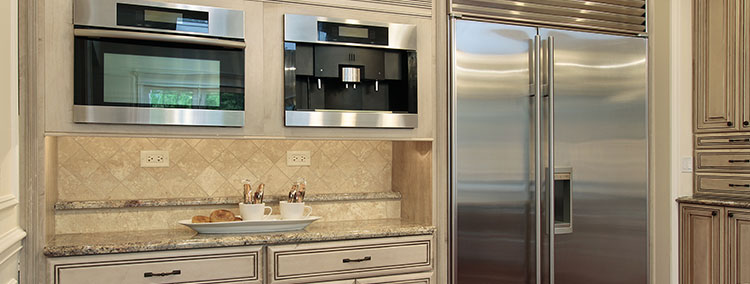
If you have a faulty refrigerator, you must be wondering, can a fridge be repaired? If you are one of the people asking this question, appliance repair professionals report that yes, you can repair a refrigerator.
While this is the case, you shouldn’t just go ahead and hire a repairman as you might be wasting your money. Before you do it, you should consider plenty of factors that include:
Factors to consider before hiring a repair professional
Age of the fridge: If you have had your refrigerator for more than a decade, you will be wasting money as it will be too expensive to repair it. This is because old appliances keep on failing, and you have to keep on fixing it. A never-ending money pit, you might say.
Spares for old appliances are also difficult to locate, not to mention the cost of maintaining the appliance. If your appliance is old, you should simply replace it.
Cost of repair: The other factor you should pay attention to is the cost of hiring the repair professional. If your fridge is not from a popular brand or is inbuilt, it will be expensive to repair compared to one from a popular brand.
Before you ask a repair technician to repair the appliance, first compare the price of fixing it and that of getting a new one.
Energy efficiency: How efficient is the appliance you are looking to repair? If you have had it for a long time, the chances are that it’s old and inefficient. Therefore, it’s contributing significantly to your home’s energy bill.
If you can improve the efficiency of the appliance, well and good, but if you can’t, you are better off simply replacing it.
What if you don’t have money to hire an AC repair professional?
If you don’t have the money to hire a repair technician, try fixing it by yourself. Some of the problems that you can easily fix include:
Failure of the freezer to switch on: The fridge will fail to turn on if you haven’t used it for a long time. When this happens, the first thing to check is the power. Is it on? Is the appliance properly connected to the socket?
Properly functioning freezers should be properly connected directly to the socket. If an extension lead connects your appliance, it could provoke a problem.
Failure of the internal freezer light to come on: The light inside the fridge can stop working due to many reasons: the light bulb might be blown, the lamp may have gotten loose, among many other issues. You need to find out why the light isn’t working and fix it.
Failure of the fridge door to close properly: In most cases, the fridge will fail to close properly if it’s not level on the ground. Here you simply need to level the fridge.
The door will also fail to close correctly if you have placed too much weight on the door shelves.
Check the condition of the fridge and fix it appropriately. While at it, also check the door seals for wear and tear and replace them if necessary.
Taking care of the refrigerator
To avoid having to repair the appliance, you should take good care of it. Some of the things you should do include:
Defrost the freezer regularly: Defrosting gets rid of excess ice. Before you defrost it, remove any foods that might be there. You should then unplug it from the power source and let the ice melt away. To speed up the ice melting, use a blow dryer or place a bowl of steaming water in the unit.
Clean the fridge: Another thing you should do is to clean the appliance regularly. Most people pay attention only to the exterior, but you should also pay attention to the interior too. At least once a week, remove all the food material and using warm soapy water, wipe all the interior surfaces.
To avoid damaging the surfaces, refrigerator repair Alexandria professionals advise against using harsh chemicals such as bleach. Stick with dishwashing liquid and natural cleaners.
Maintain the right temperature: Finally, you should maintain your refrigerator at the right temperature. As a rule of thumb, ensure that the freezer is -18° Celsius. To avoid damage, regularly check the temperature and be alert for any spoilt food.
The post appeared first on Express Appliance Repair